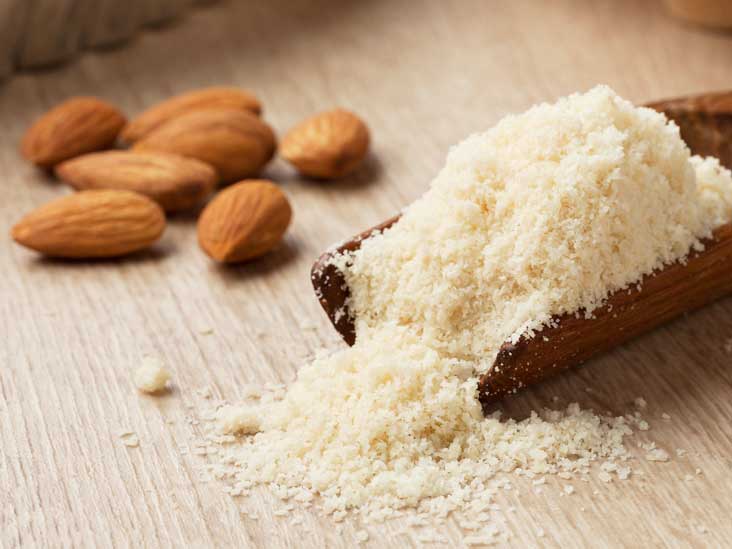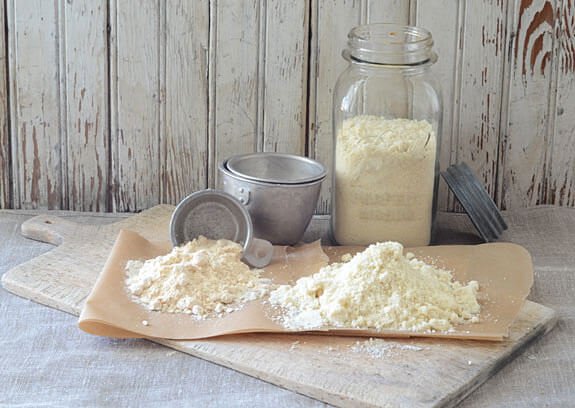Almond Flour Vs. All Purpose Flour (Plus Substitutes)

When baking, flour is the most crucial component. There are many different varieties of flour to choose from when preparing pastries, cookies, cakes, and other forms of delicacies.
There are many different varieties of flour, and most people’s diets are flour-based. All-purpose flour is the most common flour, followed by white flour mixed with various other ingredients to make a nice pastry.
Flour isn’t just manufactured from wheat; you may also make it from pulverized nuts and seeds, such as almond flour, which is highly nutritious.
You might be wondering what the most significant difference is between almond flour and all-purpose flour. Is it possible to stand in for each other?
Is it possible to replace all-purpose flour with almond flour? No, it isn’t. Even if you try, there is a structural and manufacturing difference between these flours. Learn more about these two varieties of flour, as well as the differences between them, by reading the rest of this page. Also, learn about other substitutions and recipes that may come in handy for your next meal.
Flour made with almonds

Almond flour is made from almonds and is classified as gluten-free nut flour. It’s created from blanched almonds that have been processed into a powder. In bread and other baking delicacies, this flour is used to substitute for wheat flour. People who cook low-carb meals frequently use it.
The dough will not behave the same way as it would if it were produced with white flour when cooking. You’ll need something to assist it in absorbing the liquid when baking with this sort of flour, such as protein powder or eggs. You can also add spices, and you can use them to form a crunchy crust for chicken, fish, or vegetables.
Almond flour is low in carbs and provides a somewhat pleasant flavor when mixed with nutrients. It’s got 4.3 grams of carbs, 54 grams of fat, 19 grams of protein, 11 grams of fiber, and 610 calories in it. This flour also contains vitamin E and magnesium, which are beneficial to your health.
Making almond flour from scratch and recipes:
- Don’t worry if you don’t want to buy this flour at the store; I’ll show you how to manufacture it at home and use it in your recipes. One item, a blender, and 5 minutes of your time are all you need.
- Blitz blanched almonds in a blender until they turn into powder flour. But don’t go too far, or you’ll end up with butter instead of flour.
- I recommend blending it on high for 5-10 seconds, shaking it, and repeating the process for another 5-10 seconds.
- It’s pretty basic and easy to prepare, and it won’t take up much of your time.
When should you utilize it?
- Use this flour to make cakes, and cookies, or as a substitute for bread crumbs when cooking fish, poultry, or beef. Here are a few recipes to get you started, as well as some ideas for what to make:
- Gluten-free, vegan waffles
- Cookies with chocolate chips that are gluten-free
- Carrot cake without gluten.
Flour for all purposes

This flour is often called refined flour and is manufactured by removing the brow covering from wheat grains. It is made up of both hard and soft wheat. All-purpose flour can be bleached for a softer texture, but unbleached all-purpose flour is preferred since it adds more texture to baked goods. You can use this flour to bake practically anything, including bread, pizza dough, cookies, and cakes.
This flour has a protein content of 12 to 14 percent, which helps to strengthen and shape the dough. It also contains a large amount of gluten, as well as yeast. It’s controversial whether or not this type of flour is nutritious. There is a loss of nutrients because it is created from the starchy white sections of the wheat grain. Make sure to store it somewhere cool and dark so that the flour can breathe. Moisture might attract insects or cause the flour to spoil.
When is it okay to utilize it?
- You should make all conventional baking goods with all-purpose flour. It’s flour that you can use in baking and cooking.
- Bread
- Pie crusts and pizza crusts
- Cookies
- Noodles
- Pancakes and pastries are two of the most popular foods in the United States.
- If you use all-purpose flour to make a cake, keep in mind that the dough will not be as light or delicate as cakes produced with cake flour. Bread baked with all-purpose flour is also softer.
All-purpose flour vs. almond flour

After we’ve gone through the differences between baking and all-purpose flour, I’ll go over the primary differences between all-purpose flour and almond flour. Also, see if one may be used in place of the other.
The critical distinction is the gluten component. Aloud flour, as previously said, is gluten-free, whereas all-purpose flour contains gluten. Also, almond flour is not an all-purpose flour substitute. Various flours can be used as a substitute for these.
| All types of flour: | Almond flour: |
| Calories: 455 | Calories: 610 |
| Fat: 1.2g | Fat: 54g |
| Carbohydrates: 95.4g | Carbohydrates: 4.3g |
| Fiber: 3.4g. | Fiber: 11g |
| Protein: 12.9g. | Protein: 19g. |
Almond flour and all-purpose flour substitutes:
Because you cannot substitute these two types of flour, I’ll offer you a list of substitutes for both.
Substitutes for almond flour include:
No. 1 Coconut flour
Coconut flour is the most frequently used replacement, and you can use it in place of wheat flour, but not in the same amount. You can change one cup of almond flour with 13 cups of coconut flour, and you may require eggs. At the same temperature, coconut flour can be baked.
No.2 Wheat flour
The other option is to use wheat flour. Even though it contains more fat than almonds, this flour can be used as a substitute. Replace the 1:1 ratio in baking since the baked goods prepared with it are flatter and gluten-free. This alternative does not necessitate the use of additional eggs.
Substitutes for all-purpose flour include:
No. 1 Flour made from whole wheat
It is one approach to use all-purpose flour instead of all-purpose flour. When baking, use a 1:1 ratio of white wheat and all-purpose flour. They are nutritionally comparable and have a baking feature.
No. 2 Buckwheat flour
Buckwheat flour is gluten-free flour made from buckwheat
This cereal has a nutty flavor and is high in vitamins and fiber. When baking, use a 1:1 ratio of buckwheat to flour. This flour is an excellent option because it is incredibly nutritious and healthy.
No. 3 Rye flour
Rye flour is a type of flour made from rye.
When baking, use a combination of wheat and white flour. The amount of bran determines the color of the flour, which might be white, light, medium, dark, or whole. The darker it becomes, the stronger and slightly fruitier the whole-rye flavors get.
Regular consumption of white flour, on the other hand, can result in fatty liver and an increase in blood cholesterol levels. High blood pressure, weight gain, and mood fluctuations may result from this. So limit your intake of all-purpose flour-based pastries.











